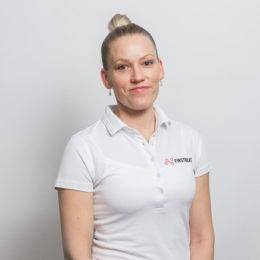
You may have heard that your fitness level is determined by your genetics. This is true. Luckily, that’s not the whole story. Experts say that about half of the variation in physical fitness between individuals is heritable, meaning it comes to you through your parents.
The other half, the part you can control, is up to you.
When it comes to taking control of your fitness, knowledge is power. Sedentary lifestyles result in poor fitness levels with negative health consequences, but, how active do you need to be to reap the rewards of an active lifestyle? You personally.
In recent years, wearable devices have increasingly offered to help answer that question. Daily step counts and step goals have become a popular means of gaining insight into our personal activity patterns.
Step counts have some great advantages. They are incredibly simple and easy to understand. They can also be almost mystically motivational. Who hasn’t made a little push in the evening to bang out that daily target?
And really, walking more and taking the stairs is absolutely good for you.
However, thinking in terms of fitness, step counts miss a critical dimension that limits their effectiveness as a tool for upping your fitness management game. Intensity.
If you are looking to boost your cardiorespiratory fitness level, measurable as VO2max, then whether you cranked out 10,000 steps over the course of the day, or put in a 10k jog makes a big difference. Intensity matters a lot.
Is it possible, based on your current fitness level and goals, that a 5k run with some intense intervals thrown in would have been a better option for you?
Within the dynamic relationship between you, your activities, and your personal fitness level, activity intensity is the great multiplier. When sufficiently challenged, your body does something remarkable. It adapts, preparing itself, in expectation of the next challenge.
Low-intensity activities, requiring minimal effort, typically don’t register as physiologically challenging enough to trigger development of your cardiorespiratory system. High-intensity efforts, on the other hand, can have a relatively big impact, even in short bursts. The rise in popularity of high-intensity interval training (HIIT) can be traced back to this phenomenon.
Naturally, the fitter you are, the harder you have to work to make a difference, so that needs to be brought into the picture as well. A particular workout that seemed tough at the start of a training program becomes easier over time. The fitness development stimulating impact is reduced as well.
To make sustained improvements in your fitness level over time, you need to keep challenging yourself with activities that are long enough and hard enough to make an impact. Of course, this doesn’t mean you need to go all out every time.
Going too hard, too often is a quick path to burnout.
Intense efforts also dramatically increase your body’s need for recovery. Remember that when you challenge yourself physically, you’re asking your body to adapt and change. Be a good boss and give your body the time it needs to complete the task.
Ultimately, when it comes to managing your fitness, no intensity, no impact.
It’s the difference between putting in the time and getting the results you want. Don’t just go along for the ride, take the wheel, learn to use intensity as a tool to boost your fitness level and reach your goals.
If you liked this article, you should subscribe to our mailing list
You might also be interested in

Answering the Fitness Question with Science
When it comes to your health and fitness, it’s easy to ask the wrong questions. “Am I fit?” is one of these questions that just creates problems. Thinking about your fitness in terms of VO2max is the easiest way to get started.

Why Should I Exercise, If I Don’t Feel Like It?
Battling stress and tiredness isn’t easy, but there are a few things you can do to help yourself.

5 Reasons to Boost your VO2max
Results matter. In terms of understanding whether your activity and lifestyle profile translates into real health benefits, VO2max – the defining metric of cardiorespiratory fitness (CRF) – is the perfect resource.
